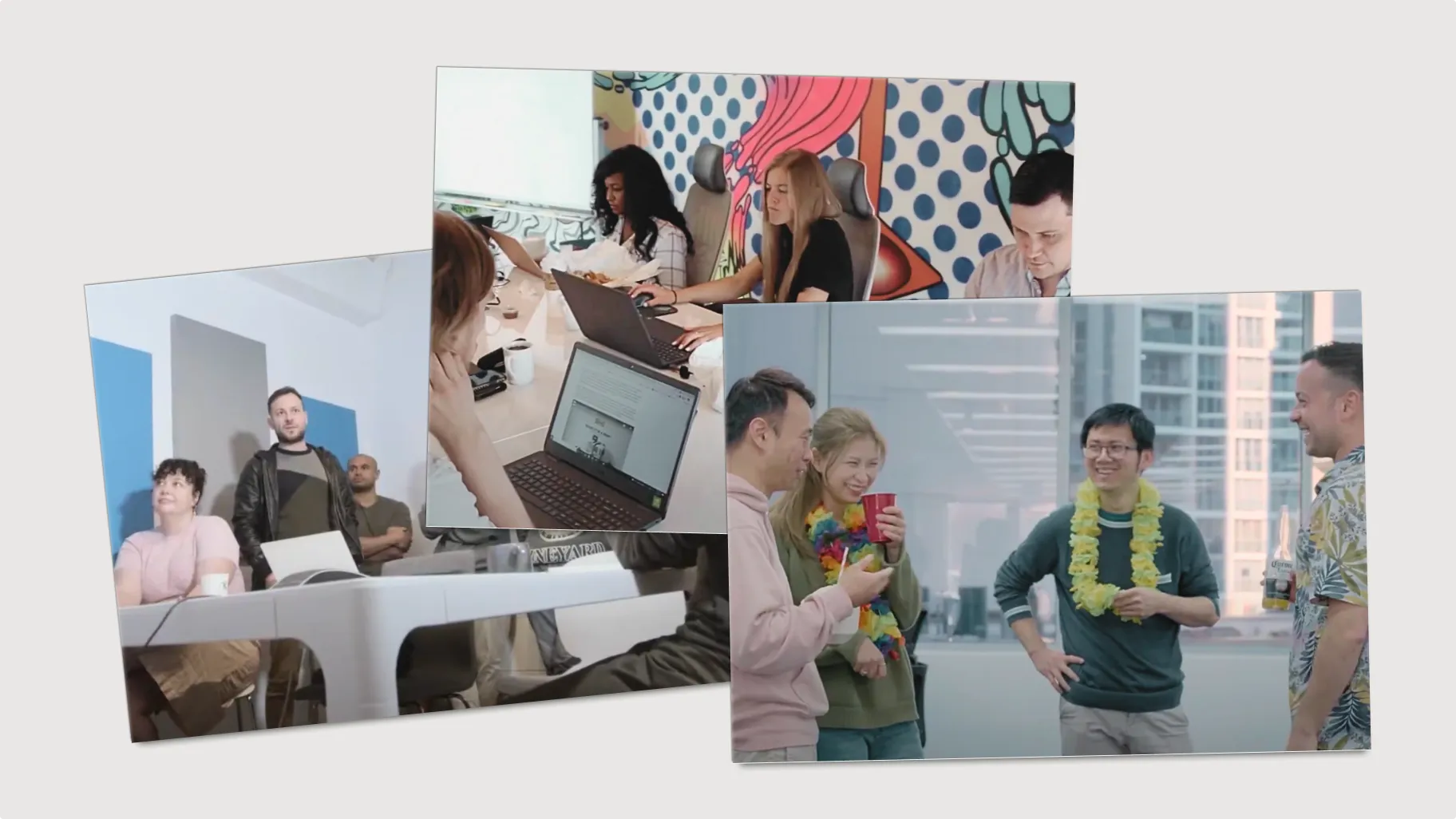From manual to magic
How Cascade created an objective, scalable system for product discovery
Insights from

Cascade Strategy
A platform to plan, execute, and track strategies

Nick Seger
Senior Product Manager

About Cascade Strategy
Integrations used
Hubspot
Link issues to affected deals for revenue-driven decisions
Gong
Sync customer calls, auto-extract feedback & blockers
Slack
Reports and clips delivered where your teams already work
Impact
How Cascade’s Nick Seger bridges the customer feedback gap with AI
In today’s fast-paced software landscape, the distance between product teams and customer voices grows wider as organizations scale. While many product leaders acknowledge this challenge, it’s exciting to see Nick Seger at Cascade Strategy actually begin to systematically solve it. His journey offers a useful learning in modern product leadership: embracing AI-powered tools, prioritizing authentic customer insights, and breaking down the traditional barriers between product and go-to-market teams.
Leading strategy execution from the frontlines
Cascade Strategy operates in what Nick describes as a new technology space - Strategy Execution. Their platform serves as the crucial nexus between high-level corporate strategy and day-to-day operations, helping organizations answer the fundamental question: are our daily efforts actually moving us toward our strategic goals? It’s a complex space where the stakes are high and customer feedback is invaluable.
“We act as almost that nexus for anything that’s happening in the business that contributes to the strategy.”
As Cascade underwent an ambitious effort to build a next-gen platform while simultaneously moving upmarket, Nick found himself facing a challenge that plagues many product leaders: how to maintain a genuine connection to customer needs while scaling. Rather than accepting the traditional game of telephone between customers and product teams, Nick took a proactive approach that would eventually greatly improve how his team processes customer intelligence.
Before implementing Twine, Nick and his team faced several critical challenges:
- Global communication lag: With a distributed team, long delays between customer conversations and feedback reaching the product team led to distorted information and unnecessary delays in decisions.
- Subjective interpretation: Feedback from sales and CS teams often carried individual biases and urgency-driven spin based on individual goals. Sometimes it’s just easier to hear directly from the customer.
- Failed attempts to add tools or process: Previous efforts to adopt new tools to formalize feedback collection had been too time consuming and lacked the true voice of customer.
- Time-intensive manual review: Hours were spent each morning reviewing Gong calls to try and find those nuggets of gold that are helpful to the product team.
- Negative feedback bias: Overwhelming focus on problems and escalations, missing positive signals and areas of the product to double down on.
- Disconnected tools: Customer feedback scattered across various systems without centralization. Every tool only shows a piece of the puzzle, making it hard to make decisions with confidence.
Embracing what GTM teams are hearing
What sets Nick apart is his recognition that sales and customer success teams are product’s best researchers.
“Before Twine, I got in the habit of reviewing Gong calls every morning. I would have this mental model of which customers I cared about more, which customers I knew would have good feedback.”
This dedication to primary customer research shows a product leader who understands that the best insights come from direct customer interactions, not filtered summaries.
However, this commitment came at a cost. Nick spent hours each morning reviewing calls, trying to piece together patterns and insights. In a globally distributed team, the challenge was even greater. “The lag for making sense of global feedback lends itself to even more subjectivity and delays for the product teams,” Nick explains.
The AI advantage in customer intelligence
When introduced to Twine, Nick saw an opportunity to maintain his high standards for customer insight while dramatically improving efficiency. His experience offers a blueprint for how product leaders can leverage AI to enhance rather than replace human judgment. “Instantly when I saw Twine being able to find and summarize key moments of those calls, it saved me a ton of time,” he shares.
Twine provided several key capabilities that transformed their approach:
- Intelligent intel extraction: Automated extraction of key moments and insights from customer conversations, without any manual work.
- Objective analysis: AI-powered extraction of insights without human bias, always done on time in a consistent format to bring the voice of customer to everyone.
- Custom intelligence digests: Ability to create focused tracking for specific product areas and have them shared directly in Slack.
- Direct call links: Seamless connection between insights and original conversation context in Gong. Twine highlights the calls worth spending time watching the watch the full video.
- Frequency and impact analysis: Identify patterns across customer segments based on frequency of request, and easily summarize revenue impact from the CRM.
- Balanced feedback capture: Equal surfacing of both positive and negative feedback.
But the real breakthrough came in how Twine helped overcome the inherent biases in customer feedback collection. “Before, if feedback came from sales or CS, there was always a bias… the person recanting what a customer told them with their own spin on it.” By providing objective analysis of customer conversations, Twine helped Nick’s team move past the traditional friction between product and go-to-market teams.
”Twine now makes it simple for me to know which Gong calls have real insights that I should spend my time watching in full.”
“It was the first process, the first piece of technology that gave me an objective view of the feedback coming from our customers.”
Redefining product discovery
Perhaps most importantly, Nick’s approach shows how modern product leaders can use AI to expand rather than narrow their customer understanding. Instead of just focusing on the loudest voices or biggest deals, Nick uses Twine to identify patterns across all customer segments.
“I would rather solve a problem that’s being talked about 10 or 15 times than the one that’s being sold to a customer for a six-figure deal.”
This approach has transformed how Cascade tracks feature impact as well. “We actually should start surfacing the good feedback,” Nick notes. “Twine is really good at surfacing that because, to be honest, people don’t get the accolades as much as what they should. It’s almost just as important to use Twine to track once a feature is released - what kind of positive sentiment we’re getting about that feature - as opposed to just looking for what the next feature should be.”
“We actually started surfacing the good feedback because people don’t get recognized for their work as much as they should. The short Twine snippets are incredible to share positive customer feedback with the team around new features or improvements. It’s only a few clicks to grab the link and post the clip into Slack.”
Creating a new standard for product leadership
Nick’s experience at Cascade Strategy represents the future of product leadership - one where artificial intelligence augments rather than replaces human judgment, where product leaders actively seek out customer voices rather than waiting for filtered feedback, and where the traditional silos between product and go-to-market teams dissolve in favor of shared, objective customer intelligence.
By embracing tools like Twine, Nick has created a more efficient, objective, and comprehensive approach to product discovery. His team now has unprecedented insight into customer needs, while actually spending less time on manual feedback review. More importantly, they’ve created a system that scales with their growth, ensuring that customer voices remain central to product decisions regardless of organization size.
For product leaders looking to follow Nick’s example, the message is clear: embrace AI-powered tools that enhance your ability to hear customer voices directly, seek out primary customer research rather than relying on filtered feedback, and create systems that surface both problems and successes. The future of product leadership isn’t about choosing between efficiency and insight - it’s about using technology to achieve both.
Want to learn how Twine can help your product team make better decisions? Book a demo.
About Cascade Strategy
Integrations used
Hubspot
Link issues to affected deals for revenue-driven decisions
Gong
Sync customer calls, auto-extract feedback & blockers
Slack
Reports and clips delivered where your teams already work
